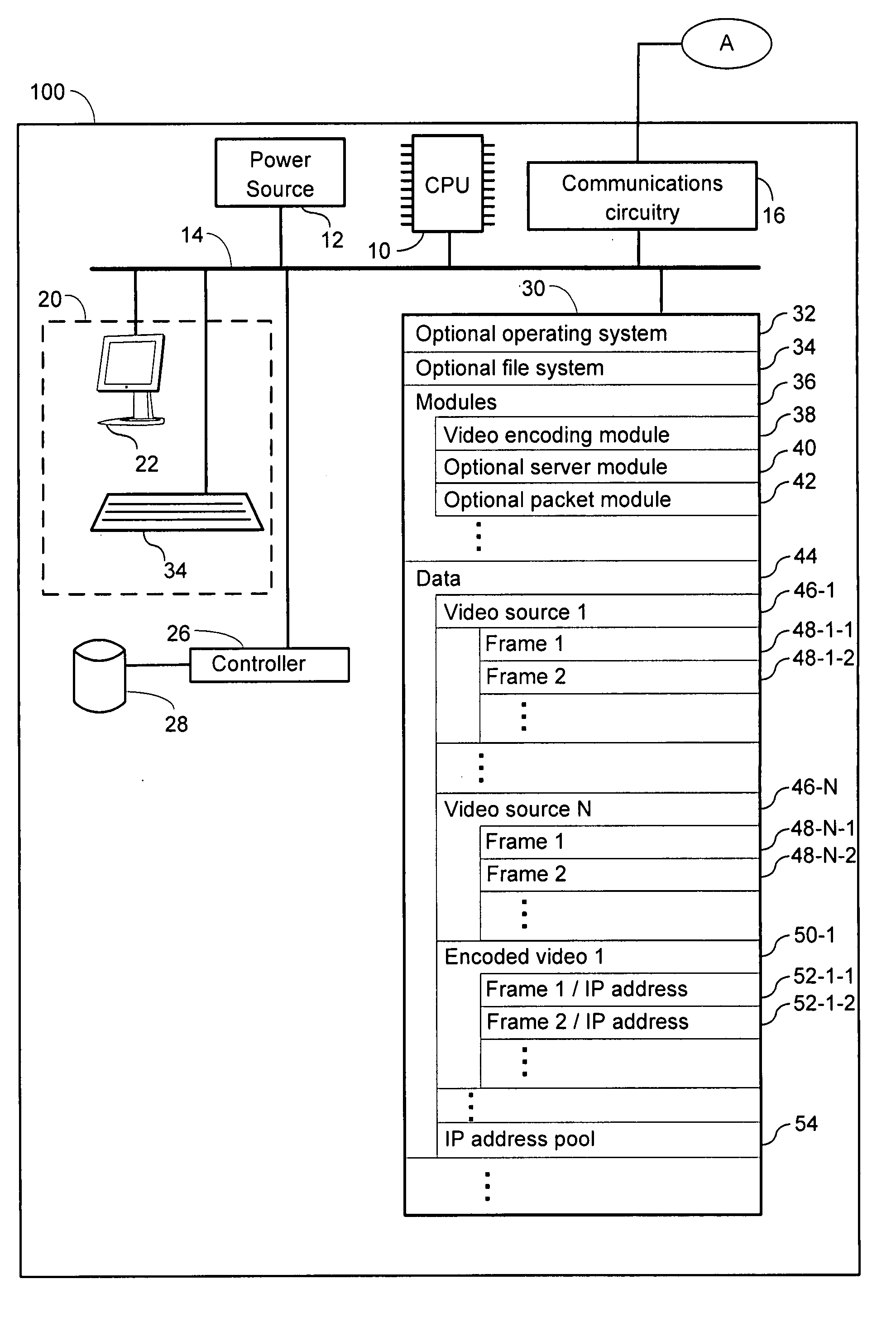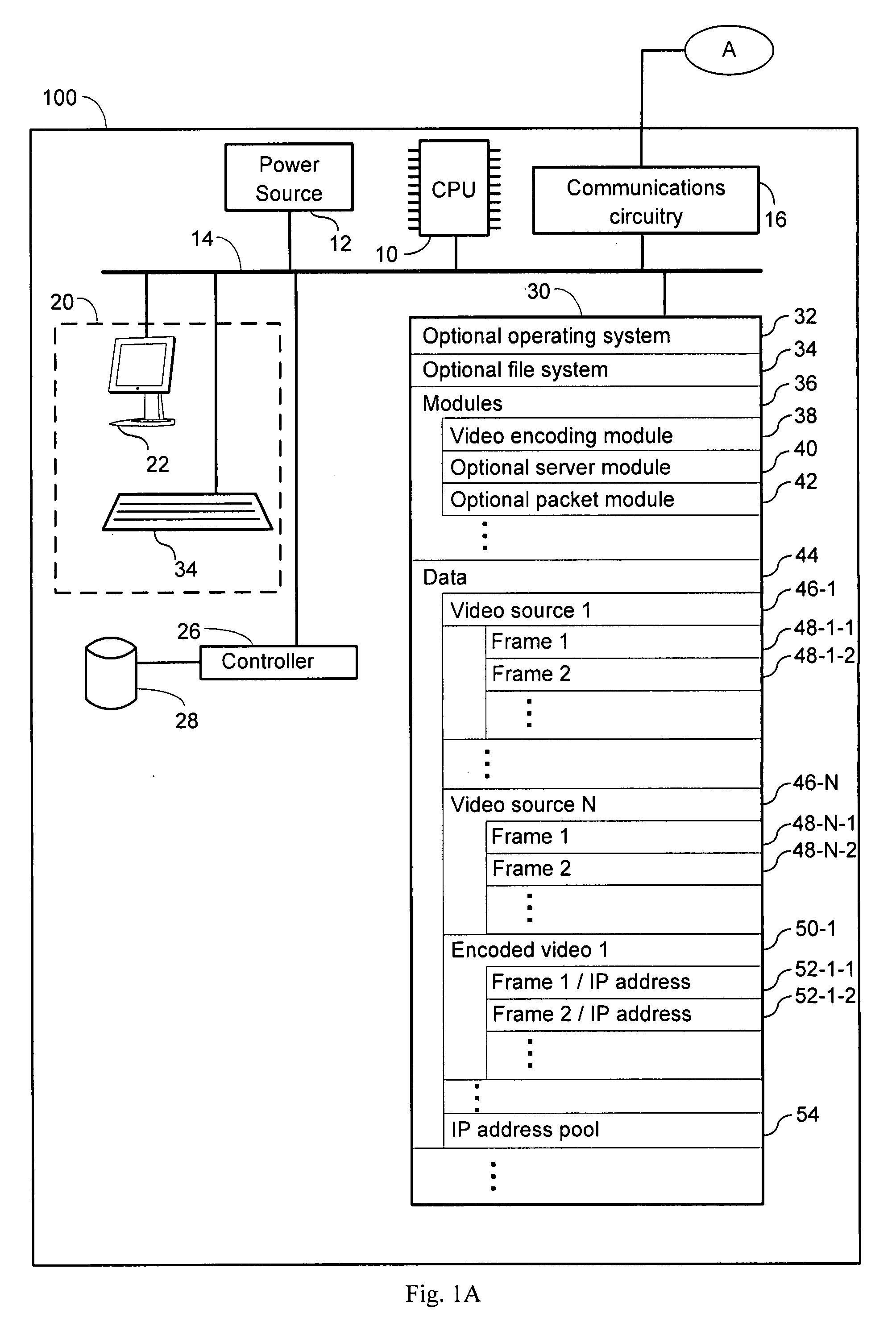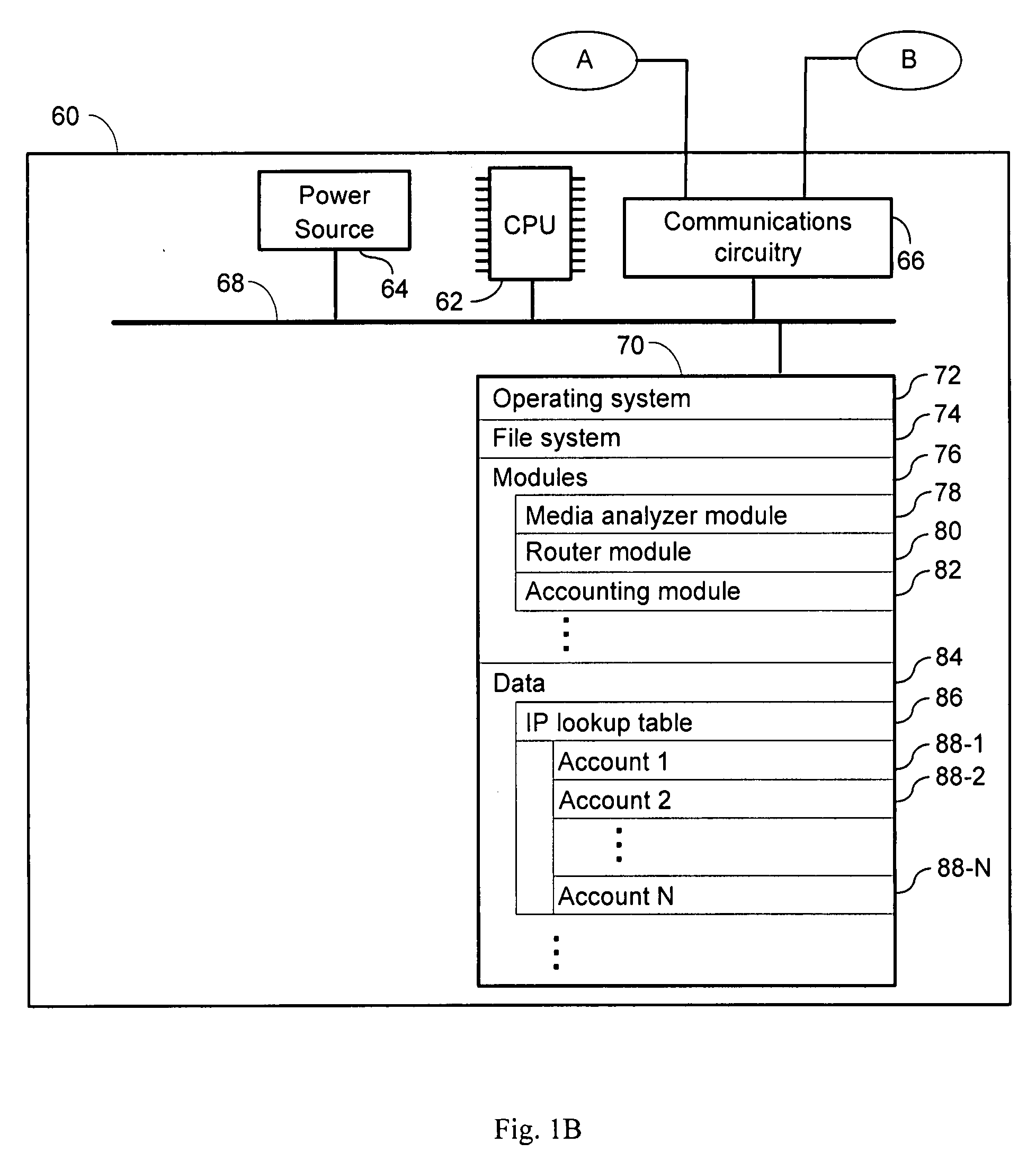Systems and methods for securing media
a technology of media and security, applied in the field of systems and methods for securing media, can solve the problems of restricting the owners' use of purchased content, restricting the unauthorized use or copy of dvd media, and inhibiting the use of media offline or portably
- Summary
- Abstract
- Description
- Claims
- Application Information
AI Technical Summary
Benefits of technology
Problems solved by technology
Method used
Image
Examples
Embodiment Construction
[0051]The present disclosure provides systems and methods for securing data in which individual frames are watermarked or otherwise permanently encoded with unique IP addresses. In some embodiments, each such IP address is an IPv6 address. IPv6 follows Internet Protocol version 4 (IPv4) as the second version of the Internet Protocol to be formally adopted for general use. One improvement brought by the IPv6 standard is the increase in the number of IP addresses available. For example, while IPv4 supports 4.3×109 (4.3 billion) IP addresses, the IPv6 standard supports 3.4×1038 IP addresses. In an IPv6 system, each of the roughly 6.5 billion people alive today can have 5×1028 (50 octillions) IP addresses. Alternatively, each gram of matter in the Earth can be assigned nearly 57 billion IP addresses. This is because an IPv6 address is 128 bits long whereas an IPv4 address is only 32 bits long. More detailed discussion of the IPv6 standard can be found in Huitema, 1998, IPv6. The New Int...
PUM
 Login to View More
Login to View More Abstract
Description
Claims
Application Information
 Login to View More
Login to View More - R&D
- Intellectual Property
- Life Sciences
- Materials
- Tech Scout
- Unparalleled Data Quality
- Higher Quality Content
- 60% Fewer Hallucinations
Browse by: Latest US Patents, China's latest patents, Technical Efficacy Thesaurus, Application Domain, Technology Topic, Popular Technical Reports.
© 2025 PatSnap. All rights reserved.Legal|Privacy policy|Modern Slavery Act Transparency Statement|Sitemap|About US| Contact US: help@patsnap.com



